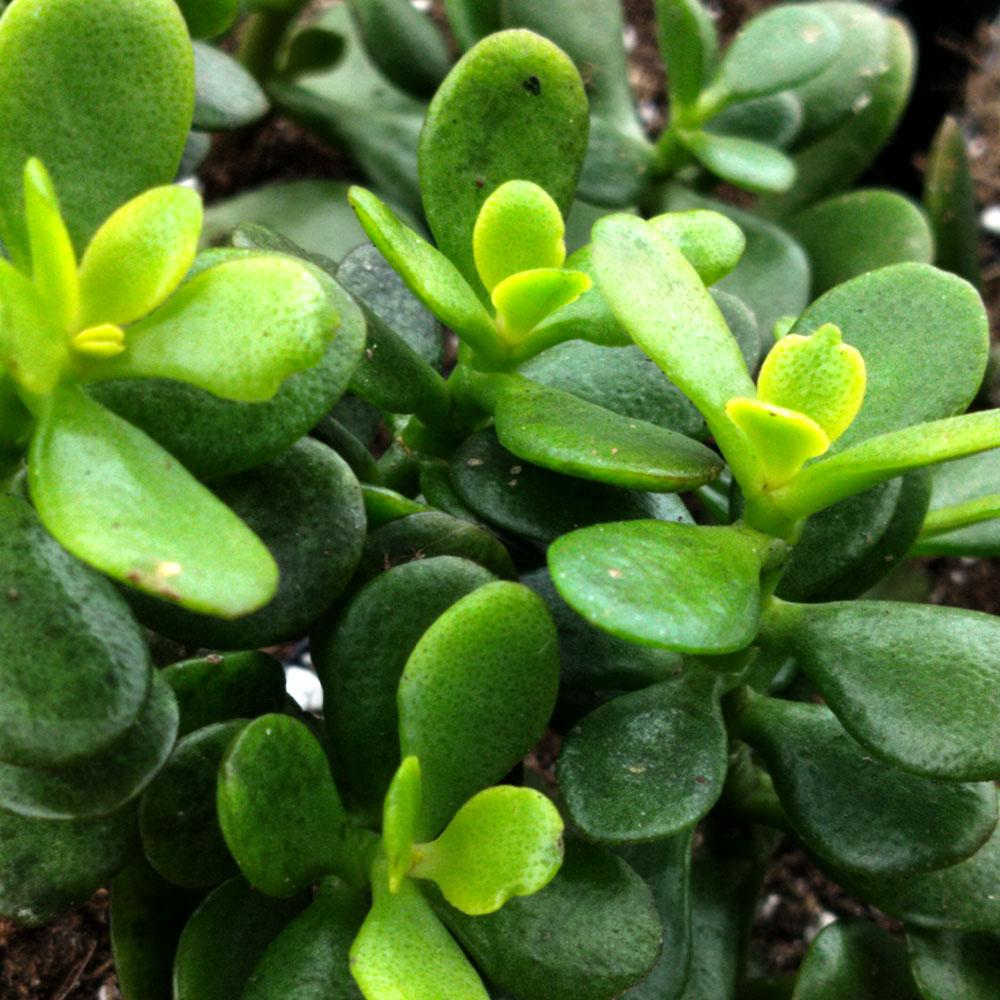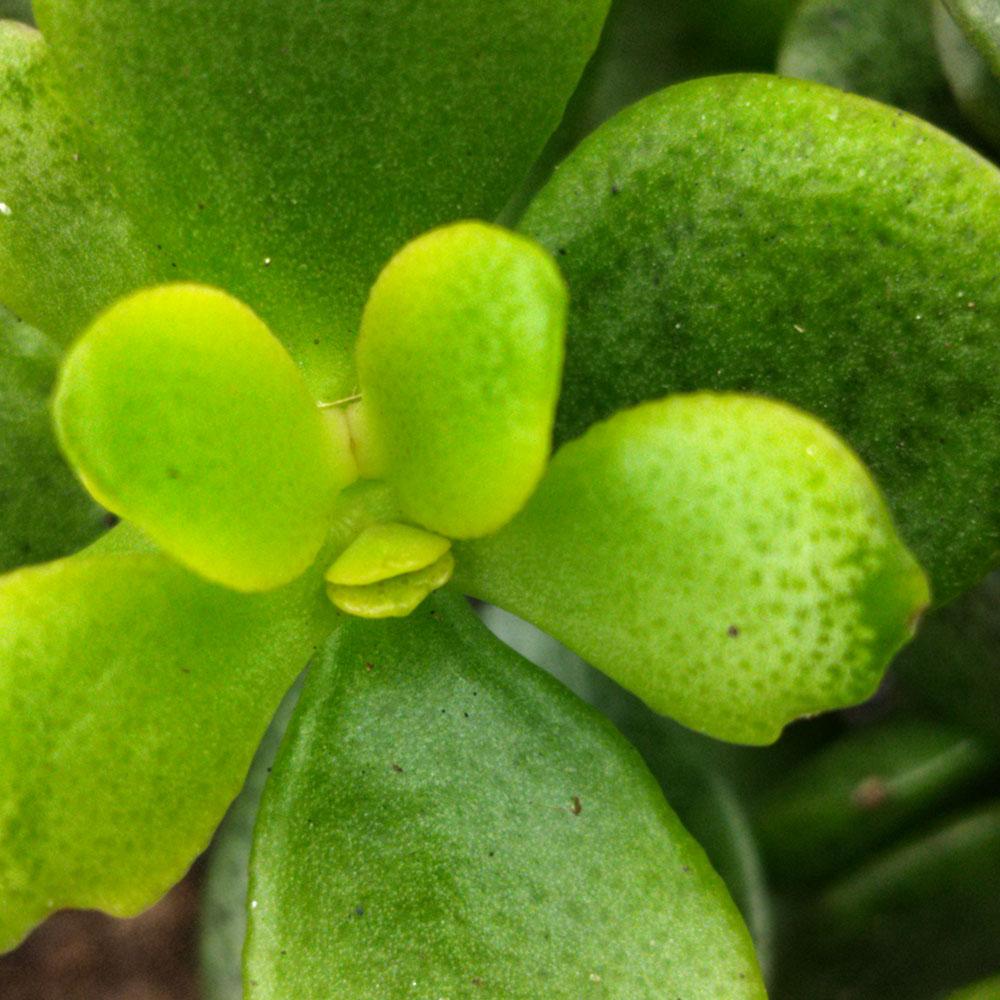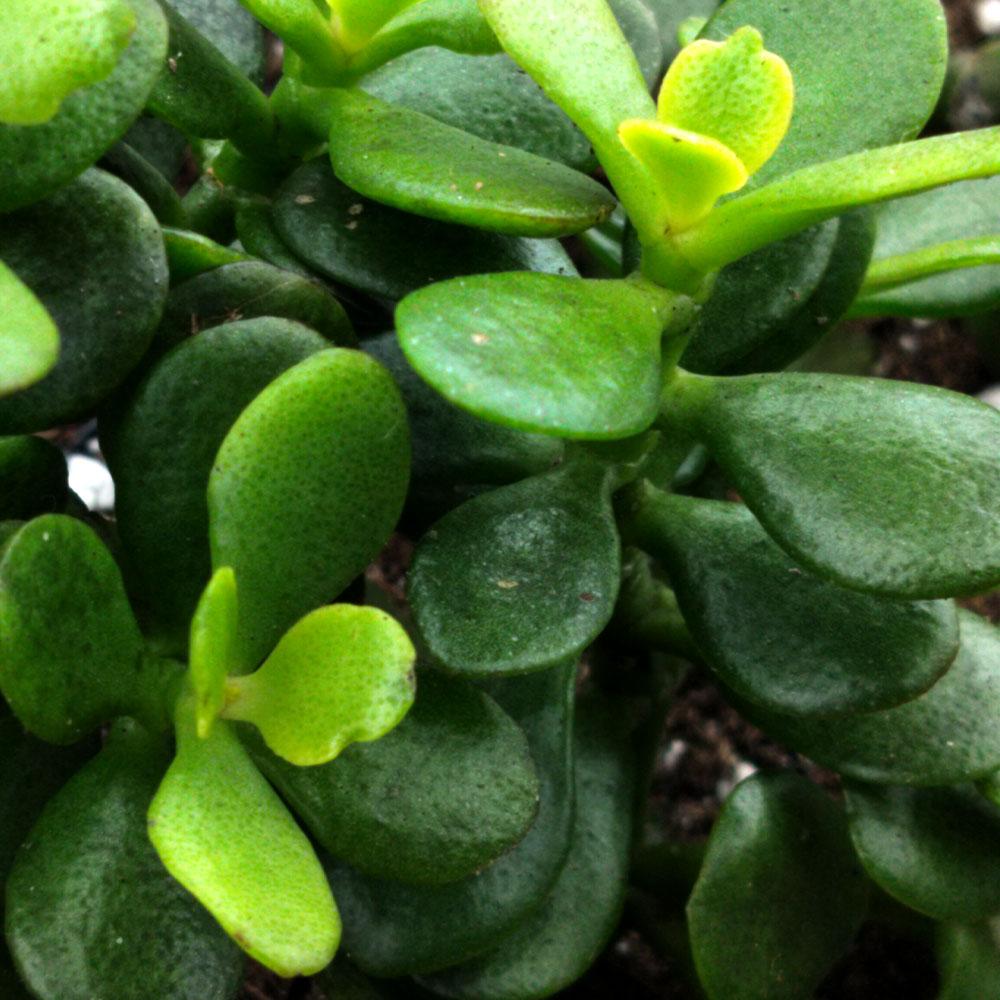No products in the cart.
Crassula ovata ‘Minor’
A branching succulent with round, color-shifting leaves.
Rated 0 out of 5
0 customer reviews
9,00 €
Only 12 item(s) left in stock!
Tags: evergreen, graphique, perennial, persistant, plant, secheresse, soleil
SKU: pda375
Category: Better Indoors, Evergreen, The Stunners
Estimated Delivery :
2-3

Crassula ovata 'Minor'
9,00 €
Only 12 item(s) left in stock!
Crassula ovata ‘Minor’ stands out due to branched growth habit, its smaller leaves and their tendency to turn completely red when exposed to strong sunshine.
Its leaves resemble those of the classic jade plant—fleshy, glossy, and round—shifting in color from light green to deep green to vibrant red, depending on sun exposure.
The plant will bloom mid-winter (anywhere between December and February) once it has reached maturity.
The flowers are tiny , cream-colored stars on long pinkish-red stems.
It has a very slow growth rate but, once mature, it forms an elegant tree like structure with a thick trunk and branches.
👨🌾GARDENING TIPS👨🌾:
-
- ✂️Cut them back if they get too long or too leggy – they respond well to a trim!
- ❄️ Crassula ovata does not appreciate the frost – so do make sure to bring them inside during the frosty months.
- ☀️As with all the Crassulae, Crassula ovata is extremely drought-tolerant and loves the sun. This in turn means that they hate moist soil > keep it dry
Learn more about how to care for your Crassula ovata ‘Minor’:
The Tale & The Botany: Crassula Ovata ‘Minor’
“Crassula” means thick or fat in Latin, referring to the leaves that become plumpy the more water they are able to store.
This is a good indicator of the health of your crassula – if less plumpy, then she needs a dash of water!
This genus was first named in 1862 and the genus contains 150-200 species, most of them occurring in South Africa.
“Ovata” comes from the Latin word meaning egg-shaped. And indeed, the leaves are a little egg-like.
🌸 Floral Morphology
Jade plants produce small, star-shaped flowers that are typically white or pale pink, often with a subtle sweet fragrance.
Flowers appear in dense terminal clusters during winter or early spring, although flowering is more common in mature, well-cared-for plants.
The leaves are opposite, oval to obovate, thick, and fleshy, ranging from bright green to deep green, sometimes developing a reddish tint on the margins in response to strong sunlight or cold.
🌱 Reproductive Biology
Crassula ovata reproduces both sexually via seeds and vegetatively through cuttings or offsets.
Flowers are hermaphroditic and attract pollinators such as bees and flies, but most propagation occurs through leaf or stem cuttings, which root readily under suitable conditions.
This vegetative strategy allows the plant to form dense, shrubby structures over time.
🌍 Ecology & Adaptations
Native to arid and semi-arid regions of southern Africa, Crassula ovata has evolved several adaptations for survival in dry environments:
-
-
Succulent leaves store water for prolonged drought periods.
-
CAM photosynthesis allows the plant to minimize water loss while maintaining metabolic activity.
-
Thick, woody stems provide structural support and enable the plant to reach up to 1–2 meters in height outdoors.
-
The plant tolerates poor, well-drained soils, full sun, and occasional frost, although it is sensitive to prolonged freezing.
-
Origin:
South Africa
| Weight | 0,5 kg |
|---|---|
| Flower Color | Cream |
| Flowering | January, February, December |
| Soil | Sandy, Well-Draining |
| Exposure | Full Sun |
| Frost Tolerance | -1°C to -5°C |
| Size | 1m H x 0.6m W |
Reviews
0
Rated 0 out of 5
0 customer reviews
5
0
4
0
3
0
2
0
1
0
Only logged in customers who have purchased this product may leave a review.
Related Products
Euphorbia cyparissias Clarice Howard
A Euphorbia that resembles a soft little cyprus tree
A Euphorbia that resembles a soft little cyprus tree
Rated 0 out of 5
Mentha suaveolens ‘Calixte’
A yellow-green dappled variation of the fuzzy mint.
A yellow-green dappled variation of the fuzzy mint.
Rated 0 out of 5
Crassula perforata
A slow-growing succulent with graphic rambling stems
A slow-growing succulent with graphic rambling stems
Rated 0 out of 5
Persicaria Donald Lowndes
A low spreading, ground cover plant with short pink pokers of small flowers all summer long.
A low spreading, ground cover plant with short pink pokers of small flowers all summer long.
Rated 0 out of 5
Trachelospermum asiaticum ‘Ogon Nishiki’
Jasmine with colorful foliage and lovely white flowers in summer
Jasmine with colorful foliage and lovely white flowers in summer
Rated 0 out of 5
Mertensia maritima
A deciduous perennial with fleshy, blue-grey-green leaves that naturally thrives on the wind and sea swept coasts
A deciduous perennial with fleshy, blue-grey-green leaves that naturally thrives on the wind and sea swept coasts
Rated 0 out of 5
Solidago ‘Golden Shower’
Beautiful showers of yellow flowers
Beautiful showers of yellow flowers
Rated 0 out of 5
Veronica spicata
A flowering plant in the family Plantaginaceae that produces graphically striking, blue candle-like flowers.
A flowering plant in the family Plantaginaceae that produces graphically striking, blue candle-like flowers.
Rated 0 out of 5
Achillea ptarmica Boule de Neige
White pompom flowers to attract bees to your garden all summer long.
White pompom flowers to attract bees to your garden all summer long.
Rated 0 out of 5
Tradescantia Blushing Bride
Gorgeous blushes of pink and white that appear in the coldest nights.
Gorgeous blushes of pink and white that appear in the coldest nights.
Rated 0 out of 5
Billbergia nutans
A bromeliad featuring a three colored, striped flower
A bromeliad featuring a three colored, striped flower
Rated 0 out of 5
Euphorbia myrsinites
Known for its draping form of silver-gray foliage and radiant blooms.
Known for its draping form of silver-gray foliage and radiant blooms.
Rated 0 out of 5
Echinops ritro
Tall, electric blue globe thistles
Tall, electric blue globe thistles
Rated 0 out of 5
Mentha x gracilis ‘Variegata’
A striking mint with striped and flecked golden-yellow leaves that are gingery-minty.
A striking mint with striped and flecked golden-yellow leaves that are gingery-minty.
Rated 0 out of 5
Leonotis leonurus
Known for its magnificent orange flowers and fragrant leaves
Known for its magnificent orange flowers and fragrant leaves
Rated 0 out of 5
Echinacea purpurea
A perennial with purple flowers all summer long
A perennial with purple flowers all summer long
Rated 0 out of 5
Nigella damascena
Delicate blue flowers surrounded by a green mist of lacy feathers for most of the summer.
Delicate blue flowers surrounded by a green mist of lacy feathers for most of the summer.
Rated 0 out of 5
Tradescantia sillamontana Variegata
A fuzzy, bright yellow, drought-resistant, indoor plant
A fuzzy, bright yellow, drought-resistant, indoor plant
Rated 0 out of 5
recent view product
Tradescantia zebrina
A zebra-patterned indoor creeping plant
A zebra-patterned indoor creeping plant
Rated 0 out of 5
Rumex sanguineus
A striking perennial vegetable, known for its tangy spinach taste
A striking perennial vegetable, known for its tangy spinach taste
Rated 0 out of 5
Daphne laureola
Dark green leaves that prefer the dry shade
Dark green leaves that prefer the dry shade
Rated 0 out of 5
Aloe vera
A succulent known for the unctuous gel hidden in its leaves
A succulent known for the unctuous gel hidden in its leaves
Rated 0 out of 5
Sedum spectabile Variegatum
Luminous variegated leaves and soft white flowers
Luminous variegated leaves and soft white flowers
Rated 0 out of 5

















































There are no reviews yet.